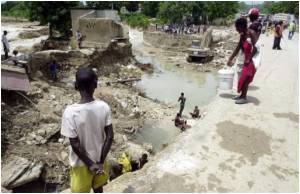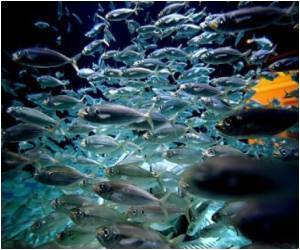
"I got here at 6:00 pm, a few moments after the earthquake, with my children, my daughter, a few months old, in my arms, and nothing else."
Two years after the 7.0-magnitude quake visited near-biblical destruction on Haiti, killing between 200,000 and 300,000 people, she is still in the camp with her daughter Kelida, now three, playing at her feet.
Older children, half-clothed and barefoot, chase a worn football across a filthy clearing, past puddles of putrid waste water.
Some 15 percent of Haiti's entire population of almost 10 million were either killed or displaced by the quake. Almost 520,000 survivors still live under tarpaulin in 800 camps dotted around the crowded Caribbean capital.
Shocked in the immediate aftermath of one of the deadliest disasters of modern times, the international community promised billions of dollars of aid money to "build back better."
Advertisement
This grandiose vision now appears to have been a pipe-dream.
Advertisement
More than 50 percent of the quake rubble has now been cleared, but little has been erected in its place and the pace of reconstruction is still painfully slow.
Most of the tens of thousands of people who fled Port-au-Prince after the quake have since returned to the overcrowded capital, desperate for work and food in a country still lacking another effective pole to attract labor.
Michel Martelly, a former carnival entertainer and pop singer, was sworn in as the new president in May, riding a populist wave and promising to bring the change that the country so badly needs.
But faced with a parliament dominated by his political opponents, it took him five months to even get a prime minister appointed.
Martelly has recently tried to nurture smaller, community-based projects such as a flagship housing program -- 6/16 -- aimed at taking residents out of six camps and relocating them to 16 neighborhoods.
Alongside it, he has created the Carmen project, whereby approved home-owners receive funds to repair their houses under the supervision of certified engineers.
Josef Leitmann, program manager of the World Bank-run Haiti Reconstruction Fund, sees glimmers of progress at last.
"You have a vision of where the government wants to go, and that?s just critical," he told AFP. "Second you?ve got leadership to take that vision and communicate it to people and inspire people and third you have political will to implement the vision."
The problems facing Haiti are vast, if not insurmountable, in the short term.
Hundreds of thousands who lost homes in the quake are still in a legal quagmire as there was no paperwork to prove their small holdings.
A cholera epidemic, blamed on UN peacekeepers from Nepal, shows no sign of abating. A year ago, 3,400 people had died and some 171,300 been infected. By the start of 2012, some 7,000 had died, and over 520,000 been infected.
"What we are looking at in Haiti today is not just recovery from the earthquake. It's not just dealing with a cholera epidemic," Nigel Fisher, the UN's chief humanitarian officer in Haiti, told AFP.
"Those came on top of a country which was structurally broken."
Experts say the key to Haiti's long-term sustainability lies in rebuilding its agricultural sector. But the one-time exporter now has to import rice for 80 percent of its population and soil fertility is so poor that most crops can no longer be supported.
The World Bank in December approved $50 million for new agricultural projects, investing in key Haitian products such as mangoes, coffee and cocoa that are garnering increased overseas attention.
Loiseau, like most of the quake refugees, needs a miracle. "My hope is God, not the leaders of this country," she told AFP, staring at the passing cars with traumatized indifference.
Source-AFP









